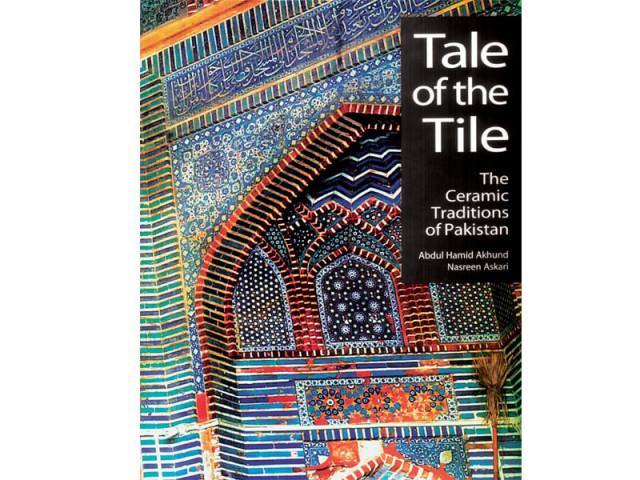Tale of the Tile: A mystical journey
Abdul Hamid Akhund and Nasreen Askari have skillfully woven in threads of deeper social commentary.

Using this book as a vessel, they transform history from a single word, often ignored, to an alive collective. After a reading, no tile, no artifact, no mausoleum will be looked at in the same way again.
The classification of this book is difficult. Tale of the Tile diffuses across categories with ease, weaving the commonalities of this art across borders. Although it began as a simple catalogue for an exhibition held at the Mohatta Palace Museum in 2006, the authors built on to include a detailed historical overview, extensive research on style and terminology, aesthetically executed photography, extracts from a 14th century manuscript, and even a reprint of a 19th century Persian treatise on the manufacture of kashi pottery. The duo is more than qualified to undertake such a mammoth endeavour. Amongst other things, Akhund is the founder of the Department of Culture and Askari is the founder Director of the Mohatta Palace Museum. They have spent their lives promoting the cultural heritage of Pakistan, jointly collaborating on various expositions for nearly three decades.
On page 13, as part of the foreword, Akhund and Askari write: “We followed countless tracks ending up with musk guiding us...It has been an odyssey of lofty heights.” This is what this journey is about.
This book is divided into two broad sections — the historical perspective and the catalogue of exhibits. As mentioned earlier, the catalogue section is a documentation of an earlier Mohatta Palace exhibition. Hundreds of high-resolution stills, accompanied by detailed information boxes and descriptive paragraphs, preserve in time a glorious showcase. Methodically, the ceramic works are divided into seven themes based on frameworks ranging from traditional to modern. In this way, the colors and patterns systematically grouped together enable the reader to visually distinguish not only the evolution of tile making but also what these tiles represent.
The historical aspect is comprehensive, wherein the authors go as far back as 2000 BCE to establish a sound base of knowledge that becomes highly useful moving forward. In these earlier pages, as they trace the origins of tile cladding in the Islamic world, Akhund and Askari cover various regions and civilisations outside modern day Pakistan, making note of ceramic art in Baghdad, works and techniques under the Timurids and Safavids, and the superior skill of Iranian potters.
From Mergarh to Kamarro Sharif to the modern ceramic studios of today, the viewer is transported to a world where vessels, horns and even whorls have meaning. These works carry influences of lands far away and near — from Northern Mesopotamia, across the Mediterranean, Persia and North Africa to the Indus Valley.
Nevertheless, it is the Islamic monuments of Pakistan that are discussed in much more detail. Some structures in Khyber-Pakhtunkhwa, such as the Andira tombs, are also mentioned. In each example, art cleverly imitates life. For instance, the Persian influence from cultural and commercial exchange is seen in the fine craftsmanship of the Indus valley; the low-key yet decisive hexagons of Multan speak of a region spiritually and politically prominent for centuries; the individuality and amalgamation of strongly shaped tiles in Uchh are remembrances of the cosmopolitan status Uchh once enjoyed; and the Lahore tiles, unmatched in their exquisiteness, whisper of grand years under Mughal patronship.
The reverence of the authors towards their beloved subject is contagious. They not only foster awareness amongst those curious about this heritage, but also implore the authorities to ensure that what survives today is preserved for tomorrow. In this way, Tale of the Tile has not only traced the history of ceramic arts in Pakistan but also fiercely safeguarded this very history. Nothing has been ignored — not the complex social backdrop, not the expertise of the builders and artists, and thankfully, not the sheer beauty of this art.
Indeed, this book is a visually lavish, intellectually rich volume that brings forth voices of the past and messages for the present. Read it in one sitting, or leave it on the coffee table and keep coming back. Either way, each appraisal is bound to evoke nostalgia for what used to be and pride for what is.
*Tale of the Tile is available at Liberty Books
Published in The Express Tribune, Sunday Magazine, December 16th, 2012.
Like Express Tribune Magazine on Facebook and follow at @ETribuneMag



















COMMENTS
Comments are moderated and generally will be posted if they are on-topic and not abusive.
For more information, please see our Comments FAQ